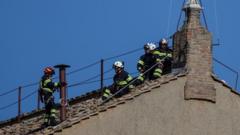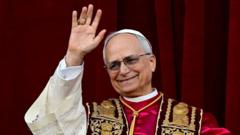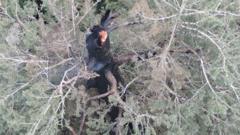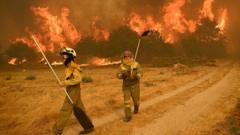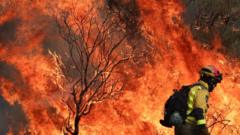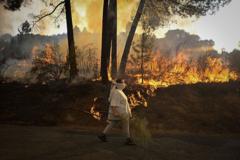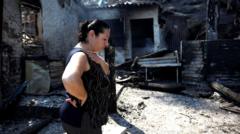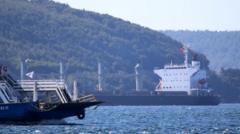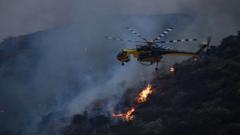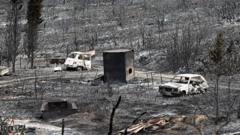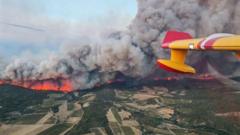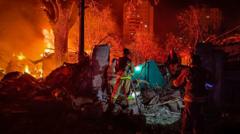The vigilant eyes of the world will soon turn to the Vatican as cardinals gather to select a new pope. The ritual of using smoke to announce their decision is a deeply-rooted tradition, still captivating millions despite the era of instant communication. When black smoke billows from the chimney atop the Sistine Chapel, it signifies that the cardinals have failed to reach a consensus. Conversely, white smoke announces, "Habemus Papam"—a new pope has been elected.
However, the behind-the-scenes activities of this spectacle are anything but simple. The Vatican employs a construction process for the chimney and smoke-producing apparatus, involving precise chemical concoctions designed to deliver a clear signal, as experts noted in recent interviews. This meticulous process involves the creation of "two custom fireworks," extensive smoke tests, and the standby presence of Vatican firefighters—an evident blend of engineering and age-old ritual.
Following the death of Pope Francis, who passed away on Easter Monday, anticipation builds as a conclave is set to convene on May 7 at St. Peter's Basilica. The meeting will begin with a solemn Mass, followed by the secretive voting process inside the Sistine Chapel where the cardinal ballots will be burned—a practice adhering to traditions dating back to the 1400s, ensuring transparency and preventing tampering.
As religious symbolism envelops every aspect of the event, smoke serves a dual purpose: it communicates to the public while maintaining the confidentiality of the voting process. The theological implications of rising smoke go beyond mere announcements; they evoke rich religious rites, where prayers are perceived to ascend to the divine.
Inside the chapel, engineers will install two specialized stoves for this conclave: one for ballot incineration and another intended solely for smoke production. These stoves connect to a carefully constructed chimney that permits smoke to escape without compromising the historical integrity of the structure. Each component undergoes rigorous testing, with fire crews securing the chimney's position ahead of time, indicating the complexity of this seemingly simple communication tool.
To ensure the smoke's visibility, technicians use chemical combinations—essentially crafting custom pyrotechnics. For dark smoke, they utilize potassium perchlorate, anthracene, and sulfur, while white smoke is the result of burning potassium chlorate, lactose, and pine rosin, each encapsulated in cartridges ignited electronically, effectively removing ambiguity from announcements.
In recent years, there have been discussions regarding modernization of the process, suggesting colored lights or digital notifications. Nonetheless, the Vatican remains steadfast in preserving its unique ritual, emphasizing the theological and traditional significance inherent in the time-honored smoke signal practice—an emblematic juxtaposition of spirituality and engineering craftsmanship.
However, the behind-the-scenes activities of this spectacle are anything but simple. The Vatican employs a construction process for the chimney and smoke-producing apparatus, involving precise chemical concoctions designed to deliver a clear signal, as experts noted in recent interviews. This meticulous process involves the creation of "two custom fireworks," extensive smoke tests, and the standby presence of Vatican firefighters—an evident blend of engineering and age-old ritual.
Following the death of Pope Francis, who passed away on Easter Monday, anticipation builds as a conclave is set to convene on May 7 at St. Peter's Basilica. The meeting will begin with a solemn Mass, followed by the secretive voting process inside the Sistine Chapel where the cardinal ballots will be burned—a practice adhering to traditions dating back to the 1400s, ensuring transparency and preventing tampering.
As religious symbolism envelops every aspect of the event, smoke serves a dual purpose: it communicates to the public while maintaining the confidentiality of the voting process. The theological implications of rising smoke go beyond mere announcements; they evoke rich religious rites, where prayers are perceived to ascend to the divine.
Inside the chapel, engineers will install two specialized stoves for this conclave: one for ballot incineration and another intended solely for smoke production. These stoves connect to a carefully constructed chimney that permits smoke to escape without compromising the historical integrity of the structure. Each component undergoes rigorous testing, with fire crews securing the chimney's position ahead of time, indicating the complexity of this seemingly simple communication tool.
To ensure the smoke's visibility, technicians use chemical combinations—essentially crafting custom pyrotechnics. For dark smoke, they utilize potassium perchlorate, anthracene, and sulfur, while white smoke is the result of burning potassium chlorate, lactose, and pine rosin, each encapsulated in cartridges ignited electronically, effectively removing ambiguity from announcements.
In recent years, there have been discussions regarding modernization of the process, suggesting colored lights or digital notifications. Nonetheless, the Vatican remains steadfast in preserving its unique ritual, emphasizing the theological and traditional significance inherent in the time-honored smoke signal practice—an emblematic juxtaposition of spirituality and engineering craftsmanship.

